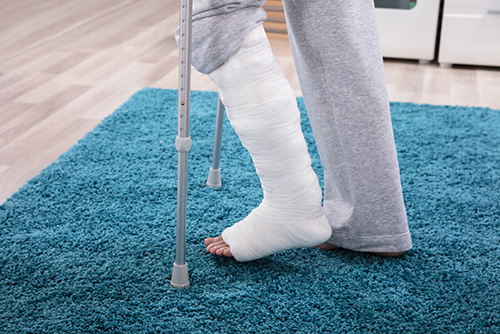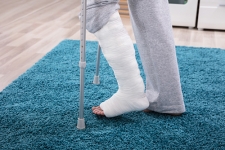All About Casts and Splints
To provide the best support, casts – crafted from either plaster or fiberglass – are custom made to the particular individual and affected area. Fiberglass is frequently utilized because it’s lighter weight, holds up better, and “breathes” easier than it’s plaster counterpart; however, plaster still has its uses due to the fact that it shapes better than fiberglass in some instances. Splints can also be custom made, if an exact fit is necessary. If an exact fit isn’t needed for a splint, there are many “over the counter” varieties that have Velcro straps, making them much easier to put on, take off, and adjust. Your doctor will be the one to decide which type of cast or splint is best suited for you.

Both plaster and fiberglass casts and splints use padding – typically a thicker cotton batting – as a protective layer that’s placed next to the skin. Once the padding is in place, the fiberglass or plaster can be applied – each is done in a similar manner, which involves dipping strips or rolls of the material in water, applied over the padding, and then gently molded into place and allowed to dry/harden. Sometimes it’s necessary to replace the cast, especially if it becomes “too big”, which sometimes occurs after all of the residual swelling has dissipated. Other times, the cast is removed at a certain time in the healing process and replaced by a splint to aide with a physical therapy regimen.
It should be noted that broken bones can take several weeks – to several months – to heal. The pain typically ceases long before the bone has healed enough/is solid enough to withstand the stress of even regular, everyday activities. What does this mean for you? For starters, it means that you will HAVE to wear your cast or splint until you bone is fully healed and is capable of supporting itself – this isn’t at a time of your choosing, either…your orthopod will make the determination as to when you can safely come out of your cast.
Throughout the time that you’re wearing your cast, you may very likely lose muscle strength in the injured extremity. This is why exercises during the healing process and after your cast has been removed are so incredibly important as they will help in restoring normal strength, motion, and flexibility – all items that our physical therapists can work with you to achieve!

